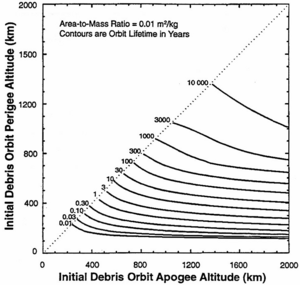-

- Image via Wikipedia
If you have ever looked up at the night sky and marveled at all you saw and wondered what else might be up there, you definitely had company. But probably not for the same reasons. There are technicians looking up at the sky and wondering about all the junk and debris that is flying around out there and just how any individual item may interfere with an intended launch of a rocket.
Due to the amazing advances in computers and computer hardware, massive supercomputers aren’t needed for this particular job any more. Private companies are able to take on the complex job of computing and tracking the orbital trajectories of debris in space. Due to the cost, time and labor-intensive nature of such tracking, often such computing was reserved for manned space flights. However with more powerful computers, advanced software and more detailed information available to a company, trajectories can now be mapped for most launches, not only of manned spacecraft but for satellites as well.
Space junk presents very real hazards to spacecraft. Lives could well be at risk as well as billions of dollars worth of equipment and scientific experiments. The need to know that a rocket is picking a safe course through an ever-increasing field of debris is more important than ever to the success of its mission.
The hardware required for doing such specific computing has indeed become smaller, cheaper and more powerful. Technicians state it is no longer a requirement to employ a one thousand core computer to accomplish this work. It can be successfully achieved with a ten core machine.
These technological improvements allow the work to be done cheaper, faster and in significantly more detail. In earlier times, such a detailed orbital plotting would have taken at least thirty days to finish. Today, this detailed work can be done in three days.
Advances in computer hardware are making the skies safer in more ways than one.